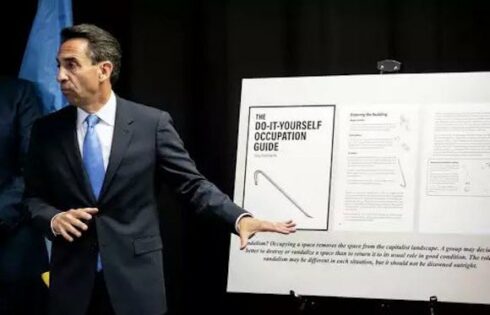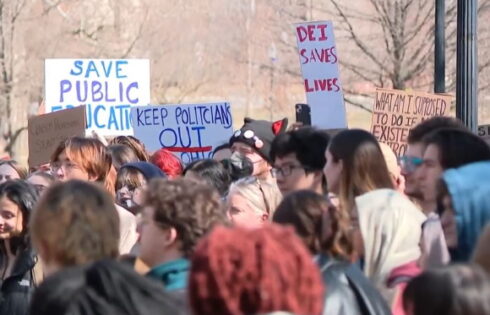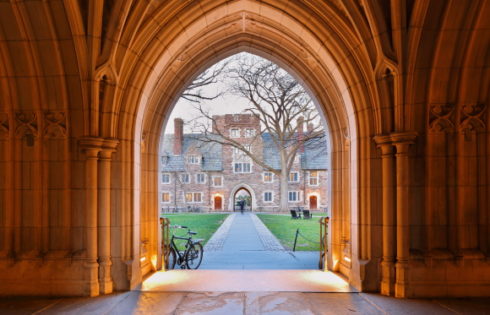
It’s long been gospel among lockdown politicians, celebrity public health figures and their disciples that six feet of physical distance is necessary to mitigate COVID-19 transmission.
This is one of the most stated reasons why school districts across the country – generally those with strong teachers unions – have kept schools closed, doing the most harm to marginalized students. There’s rarely enough room in classrooms to keep everyone six feet apart.
The World Health Organization, by contrast, recommends just one meter (3.3 feet). A new study in Clinical Infectious Diseases, by researchers at Boston University, Brown, Harvard and the University of Utah, goes even lower in physical distance between students.
Studying school districts in Massachusetts that either had three- or six-feet distancing requirements, they found “no significant difference” in COVID-19 case rates for either students or staff depending on physical distance.
This was quite a large study pool (IRR means incidence rate ratio), the abstract notes:
Among 251 eligible school districts, 537,336 students and 99,390 staff attended in-person instruction during the 16-week study period, representing 6,400,175 student learning weeks and 1,342,574 staff learning weeks. Student case rates were similar in the 242 districts with ≥3 feet versus ≥6 feet of physical distancing between students (IRR, 0.891, 95% CI, 0.594-1.335); results were similar after adjusting for community incidence (adjusted IRR, 0.904, 95% CI, 0.616-1.325). Cases among school staff in districts with ≥3 feet versus ≥6 feet of physical distancing were also similar (IRR, 1.015, 95% CI, 0.754-1.365).
Three feet versus Six in Schools. MA data on cases.
Just posted in Clinical Infectious Disease.https://t.co/u9n71skp2M
— Emily Oster (@ProfEmilyOster) March 10, 2021
The role if any of masks in mitigating the spread of the novel coronavirus is not clear because of Massachusetts law and school practice.
The state mandates masking for all staff and students in 2nd grade and higher, and 7 in 10 districts chose to force masks on even children in earlier grades, while just over 1 in 4 “strongly encouraged” masks on all children. (Three districts mandated masks starting at 1st grade, and seven “did not have details in their masking policy to comment on grade requirements.”)
In other words, there was no true control population to measure the effect of universal masking. Children are widely known to be poor transmission vehicles for COVID-19, and it’s unclear if younger children can transmit at all.
While the study’s conclusion states that the three-foot distance “can be adopted in school settings with masking mandates without negatively impacting student or staff safety,” the body of the study offers no evidence that masks are playing a role.
In a discussion of international variation on school reopening mandates, it notes that schools in England had much more amorphous requirements during their “summer half term.” Children were simply “advised to maintain distance ‘as able'” and “universal masking was not required”:
Reported infections and outbreaks with a limited distancing policy were low, with 113 cases of infection and 55 outbreaks, among a large population (median daily student school attendance of 929,000).
The study says previous American research “clearly highlights the importance of masking as a mitigation measure,” while also finding that “mask compliance in school settings is high” – again, showing there’s no true control group to measure the effect of masking.
One of the cited studies in defense of masking, a CDC “scientific brief” from August, was dissected in detail in the COVID-19 analysis publication Rational Ground.
Author Megan Mansell, a former school district official with a background in personal protective equipment for “hazardous environs,” made several criticisms of the “sloppy” research. One was the CDC’s failure to admit that “COVID is an airborne contagion” whose viral size is smaller than filtration abilities in commercially available masks.
Read the full study and abstract.
IMAGE: CDC/Unsplash
Like The College Fix on Facebook / Follow us on Twitter




Add to the Discussion